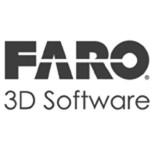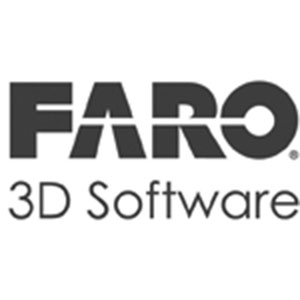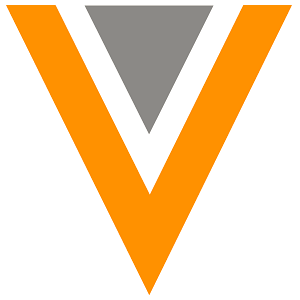Category: The Battle Road IPO Review
Gaia: Gaining Ground in Internet Streaming
 “If we want to set out on the arduous search for the truth, we must all summon up the courage to leave the lines along which we have thought until now, and as the first step begin to doubt everything that we previously accepted as correct and true. “
“If we want to set out on the arduous search for the truth, we must all summon up the courage to leave the lines along which we have thought until now, and as the first step begin to doubt everything that we previously accepted as correct and true. “
—Erich von Daniken
With trailing 12-month sales of $40 million and a market cap of roughly $220 million, Gaia, based in Boulder, Colorado, is a leading provider of new age streaming video services. With over 500,000 subscribers to its monthly service, the company focuses on several genres, including yoga, seeking truth, transformation, and alternative healing, and thus occupies a unique niche within the streaming content landscape. The company boasts over 8,000 titles, 90 percent of which are unique to Gaia. Subscribers reside in 185 countries, with about 30 percent of revenue coming from international markets.
Though the majority of viewership is focused on several thousand titles in its library, no single title accounts for more than one percent of viewership. The company continues to create new video content in its Colorado studios.
Gaia was founded as Gaiam in 1988 in Boulder, Colorado by entrepreneur Jirka Rysavy, who was also a founder of Corporate Express, and Crystal Market, a natural foods market later acquired by Wild Oats Market. Gaiam began with a mission to provide products to those in pursuit of a healthy lifestyle and a respect for the environment, based on ecological sustainability, consistent with the corporate ethos of other Boulder-based companies, such as Wild Oats Market, and Celestial Seasonings. Gaiam, the company’s original name, came about as the fusion of Gaia, the ancient Greek deity, who represented the idea of the earth as a living system, and “I am,” meant to evoke a sense of connectedness with the planet.
2016 was a transformational year for Gaiam. In May, the company sold its equity interest in Natural Habitat, its eco-travel subsidiary, for $13 million in cash. Later that month it announced the sale of its Gaiam Brand business to Sequential Brands Group (NASDAQ: SQBG) for $167 million. The sale included the company’s branded yoga, fitness and wellness consumer products, and content, with the exclusion of the streaming rights to that content. The sale of its branded products business allowed Gaiam to focus exclusively on streaming video services and DVD distribution, and the company changed its name to Gaia. The new company utilized $77 million to repurchase 9.6 million Class A common stock shares, and 840,000 vested stock options at a fixed price of $7.75 per share in a tender offer completed in July of 2016. This transaction reduced its shares outstanding from 24.6 million to 15 million. By the end of 2016, Gaia had over 200,000 subscribers to its internet video service.
In March of 2018, Gaia executed a secondary stock offering, and sold 2.3 million Class A common shares at $15 per share. In connection with the offering, certain directors and officers of the company agreed to purchase roughly 135,000 shares. Gaia’s advisor for the transaction was Roth Capital Partners. The offering was led by B. Riley FBR, Lake Street Capital Markets, and Dougherty & Company. Gaia used a portion of the $32 million in net proceeds to pay down $12.5 million in debt. In early September of 2018, Gaia announced that it was about to cross the 500,000 subscriber mark, which compared to 311,000 subscribers in the prior year, and marked a major milestone in its quest to achieve one million subscribers by the end of 2019.
Gaia has taken an aggressive approach to marketing by investing 90 to 120 percent of streaming revenue in the last few quarters in customer acquisition as part of its goal to sign up one million subscribers by the end of next year. Year to date revenue has grown an impressive 58 percent, though its operating losses have widened to $25 million, from $19 million over the same period last year. The company currently intends to utilize most of the $31 million in cash on its balance sheet, along with a secured line of credit of $12 million to aggressively target new customers over the course of the coming year, with the intent of letting its cash balance fall to between $2 and $5 million, before it begins to generate profit on a consistent basis.
Gaia recently launched a new channel, focused on alternative healing, drawing upon roughly 1,000 titles from its existing library, in an effort to more effectively merchandise the content, and attract new subscribers with interest in this segment. The company also intends to launch a new premium service that will be priced in the vicinity of $299 per year, which will include access to live events.
Amazon.com: Eyeing the Home Robot Market?
 According to what appears to be a credible article in last week’s Bloomberg Technology, Amazon.com is proceeding with plans to create a home robot, through a product development effort that has been code-named Vesta, as part of its Lab126 consumer device division, based in Sunnyvale, California. Lab126, led by Greg Zehr, a former head of R&D for Palm, a pioneer in mobile computing, is credited with the introduction of Kindle e-book reader, and is responsible for the Amazon Echo, FireTV set top boxes, and Fire tablets. It is unclear what purpose an Amazon.com home robot would serve, but in general terms the speculation is that Amazon.com is looking to build on the success of the Amazon Alexa assistant and Echo home speaker product line by creating a roaming version of Alexa, perhaps with the ability to conduct basic house chores.
According to what appears to be a credible article in last week’s Bloomberg Technology, Amazon.com is proceeding with plans to create a home robot, through a product development effort that has been code-named Vesta, as part of its Lab126 consumer device division, based in Sunnyvale, California. Lab126, led by Greg Zehr, a former head of R&D for Palm, a pioneer in mobile computing, is credited with the introduction of Kindle e-book reader, and is responsible for the Amazon Echo, FireTV set top boxes, and Fire tablets. It is unclear what purpose an Amazon.com home robot would serve, but in general terms the speculation is that Amazon.com is looking to build on the success of the Amazon Alexa assistant and Echo home speaker product line by creating a roaming version of Alexa, perhaps with the ability to conduct basic house chores.
The authors of the article indicate that prototypes have been built with advanced cameras, and that Max Paley, a former Apple executive, is working on computer vision technologies for a home robot. The Bloomberg article suggests that Amazon.com plans to “seed” robots in homes by the end of this year, and could potentially launch a commercial robot sometime in calendar 2019. The article also indicated that based on Amazon’s prototypes and tests, it may choose not to enter the market.
Is Amazon.com’s Entry Plausible?
Despite its failure in the smart phone market, Amazon.com has emerged as a prolific consumer electronics product company, having made a number of successful bets, most notably having created the e-book market with the Kindle, and more recently creating the market for smart home assistants, via Alex and Echo. Importantly, Amazon has had its greatest success in categories that it creates. In the Kindle e-reader category, Amazon used to have some competition from the Nook, but not much anymore. Google, which is looking to parlay its success with Google Assistant into the Google Home product line, is playing a severe game of catch up to Amazon.com, as the Echo device family holds a more than two-to-one market share advantage against the Google Home product. Alphabet recently merged its Nest division, which provides, smart thermostats, smoke detectors, webcams, and home alarm systems, into its Google hardware division, suggesting that the Google assistant will be more tightly integrated into Google’s smart home offerings.
At this point it remains unclear what Amazon.com’s product and delivery plans are for the smart home, beyond continued updates to the Echo device family. Amazon.com has a growing base of talented engineers, and proven expertise in addressing the smart home, through the success of Alexa and Echo. Amazon also owns its own robotics company as a result of the $750 million acquisition of Kiva Systems back in 2012. Kiva has been focused on robots for warehouse fulfillment operations, and it is unclear whether the robotic R&D efforts of Kiva, based on the East Coast, and Lab123, are linked.
Our sense is that Amazon.com has many of the pieces in pace to create some type of consumer robot. The question we have is how long it would take Amazon to commercialize a product, and what tasks it would perform. Another key question is whether Amazon.com will choose to enter the market at all, given the large number of other product opportunities that it has under consideration.
Spotlight on Social Media
Spotlight on Social Media: Twitter’s Registration Policies Under Review
 Recognizing the rising influence of social media networks on the spread of junk news and unfiltered opinion, Facebook and Twitter have been called recently to testify before Congress to discuss their policies to monitor illegally registered and anonymous users, as well as advertisers. A wide range of concerns are under examination, including the use of social networks by foreign governments to influence the outcome of the 2016 presidential election, as well as foreign governments and hate groups seeking to inject invective into the discourse on current affairs.
Recognizing the rising influence of social media networks on the spread of junk news and unfiltered opinion, Facebook and Twitter have been called recently to testify before Congress to discuss their policies to monitor illegally registered and anonymous users, as well as advertisers. A wide range of concerns are under examination, including the use of social networks by foreign governments to influence the outcome of the 2016 presidential election, as well as foreign governments and hate groups seeking to inject invective into the discourse on current affairs.
Unlike Facebook, which purports to have policies in place to vet the identity of those who purchase ads and post opinions, Twitter has a looser policy as it pertains to posting opinions, one in which a user need not provide details of his or her identity to post messages.
Twitter announced on September 28th that Russia Today, a media organization with strong ties to the Russian government, purchased $274,000 in US ads in 2016 and promoted over 1,800 tweets targeted to the US market. The company also detailed some of its efforts to root out misinformation on its sites, as well as ongoing efforts to eliminate false or spam accounts, which the company estimates as less than five percent of its monthly active user base, which totals 328 million.
In light of prior concerns expressed by US and European regulators, Twitter already has policies in place to root out terrorist postings, hate-related violence, and child pornography from its web sites. Partly in response to calls for Twitter to police its user community, the company recently announced that it has suspended nearly 300,000 user accounts with links to terrorism in the first half of 2017, 95 percent of which were unmasked by the company’s automated spam-fighting tools. 75 percent of the accounts were suspended before the account could fire off its first tweet.
With regard to hate speech, Twitter and Facebook last year pledged to European authorities that they would respond to violent, xenophobic, or racist comments within 24 hours. European authorities have recently requested that the companies respond even faster in cases of suspected terrorist postings.
Twitter has, however, chosen not to be an arbiter over political views or the veracity of news sites espoused by users, in keeping with its policy to allow the free exchange of ideas and opinions, no matter how crudely expressed. This policy has placed it at odds with various national governments over the years, including the US government. Twitter has sued the US government over Twitter’s desire to publish in its transparency reports the precise number of requests sought by government authorities and FISA court orders.
Our overall sense is that government authorities will keep the heat on Twitter to suspend and remove terrorist postings on the platform, but that authorities will be less able to restrict political opinions and regulate foreign news sources, both of which would be anathema to free speech advocates.
FARO Technologies: Measuring for Success
 With trailing 12 month sales of $318 million, a market cap of $473 million, $150 million in cash and no debt, FARO Technologies is a leading provider of three-dimensional (3D) measurement and imaging devices. The Lake Mary Florida company has over 200 patents, and several hundred more pending on a global basis. The company’s patents will expire on a rolling basis between now and 2024.
With trailing 12 month sales of $318 million, a market cap of $473 million, $150 million in cash and no debt, FARO Technologies is a leading provider of three-dimensional (3D) measurement and imaging devices. The Lake Mary Florida company has over 200 patents, and several hundred more pending on a global basis. The company’s patents will expire on a rolling basis between now and 2024.
With roughly 15,000 customers and 30,000 product installations across the globe, FARO serves a prestigious customer base, which includes the leading OEM manufacturers in the automotive and aerospace markets, such as GM, Daimler, BMW, Volkswagen/Audi, Jaguar, Nissan, Boeing, the US Military, and Airbus. Importantly, FARO maintains a low level of customer concentration, and much of its business comes from second and third tier suppliers to OEMs in its key markets. For all of 2014, the company’s top ten customers accounted for less than five percent of sales. In the third quarter of 2015, the top five customers accounted for 6.2 percent of sales. In a typical quarter about 70 percent of sales come from the company’s installed base, while new customers contribute the remainder.
FARO Technologies is best known for its Arm product, which provides precise 3D measurement of mechanical objects, and has seen strong traction across most industrial verticals. FARO’s Focus laser scanner product, believed to be the company’s second strongest selling product, has achieved some success in industrial applications, but has been facing competitive pricing pressure more recently, particularly in the price sensitive architectural engineering and construction (AEC) vertical market, the laser scanner’s largest vertical. The company also offers the FARO Laser Tracker, a portable coordinate measuring machine for large volume 3D measurement.
FARO Technologies faces competition from a number of global competitors, including Hexagon AB of Norway, Trimble Navigation, Topcon, as well as other niche providers, such as Steinbichler of Germany. Current foreign exchange rate dynamics have emboldened FARO’s European competitors to attempt to gain market share, thus exploiting the relative strength of the US dollar.
We remain optimistic regarding FARO Technologies’ longer term growth prospects, despite currency headwinds and macro conditions that began to emerge in the first quarter of 2015. We are impressed by FARO’s solid technology and strong customer base, though 2015 has proven to be a transition year in which the company faced numerous market and foreign exchange challenges. During this period turnover in the company’s executive ranks has been significant, particularly in light of the recent resignation of the company’s long-standing and hard-charging CEO and president Jay Freeland.
That said, the company has announced an ambitious organizational and growth strategy under the leadership of interim CEO Dr. Simon Raab, who is also a company co-founder. Recently appointed CFO Laura Murphy brings significant operational experience to the company, with experience at Philips and Ford Motor Company. Despite its challenges, FARO retains an excellent balance sheet overall, with $150 million in cash, no debt, and re-purchased $23 million of its common stock in the fourth quarter, under a $41 million share repurchase authorization.
Veeva Systems: Taking the Cloud to Life Sciences
 With projected calendar 2015 sales of $410 million and a market cap of roughly $3.3 billion, Veeva Systems is a leading provider of cloud software for salesforce automation, content management, and sales contact data to the global life sciences industry. Based on an exclusive software license from salesforce.com (NYSE: CRM), Veeva’s CRM software is now utilized by 17 of the top 20 largest pharmaceutical and biotech companies, including eight of the top 10. Within the top 20, only three have thus far not made the switch to Veeva: Switzerland-based Roche Holding, France-based Sanofi, and France-based Novo Nordisk, which ranks in the top 15.
With projected calendar 2015 sales of $410 million and a market cap of roughly $3.3 billion, Veeva Systems is a leading provider of cloud software for salesforce automation, content management, and sales contact data to the global life sciences industry. Based on an exclusive software license from salesforce.com (NYSE: CRM), Veeva’s CRM software is now utilized by 17 of the top 20 largest pharmaceutical and biotech companies, including eight of the top 10. Within the top 20, only three have thus far not made the switch to Veeva: Switzerland-based Roche Holding, France-based Sanofi, and France-based Novo Nordisk, which ranks in the top 15.
Veeva has identified an annual market spend of over $5 billion in software for CRM, content management, and sales data, and so it has much running room ahead. Veeva has already captured an estimated 50 percent of the CRM market for pharma and biotech, and could very well capture as much as 60 percent of the market over the next several years, as the company continues to roll out new seats to existing customers, and sell additional CRM add-on modules.
Since Veeva is cloud-based, and features a multi-tenant architecture, the company can update the software of its entire customer base at the same time, reducing the time, aggravation, and cost associated with maintaining and updating several versions of the same software program. Veeva’s cloud-based product set stands in contrast to two of its largest competitors, Oracle (NASDAQ: ORCL), and IMS Health Holdings (NYSE: IMS), which support and maintain several software packages simultaneously, many of which have been developed for older client server computer systems, and are not hosted in the cloud. Support for these older software products detracts from keeping their cloud products up to date, which will likely lead to further market share erosion.
Veeva’s newer products for content management and sales data, respectively, accounted for less than 10 percent of sales a year ago, but now account for about 20 percent of product sales. These products carry slightly higher gross margins than the company’s CRM products, and more than double its addressable market. Veeva has additional room to sell Veeva CRM, Veeva Vault, and Veeva Network to existing and new customers, as well as to sell the new products to other segments in the life sciences market, such as medical devices, laboratory instruments, and CROs—segments with which the company conducts limited business currently.
Veeva benefits from an experienced management team, led by Peter Gassner, a former SVP of Technology at saleforce.com, and at Peoplesoft (later acquired by Oracle), where he was Chief Architect and General Manager for PeopleTools, and at IBM Silicon Valley Lab, where he participated in database research and development. Matt Wallach, co-founder and President, was formally GM of the Pharmaceuticals and Biotechnology division of Siebel Systems (later acquired by Oracle). CFO Tim Cabral has held financial management positions at Peoplesoft and other technology companies. Detailed knowledge of the specific needs of the pharma and biotech segments, gives Veeva a leg up over its competitors, many of whom have only general knowledge of the life sciences sector.
Veeva has a strong balance sheet, which features $438 million in cash and no debt, and continues to generate very solid cash flow, all the while growing the business, while running at a 30 percent operating margin in the most recent quarter.





